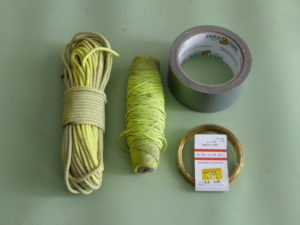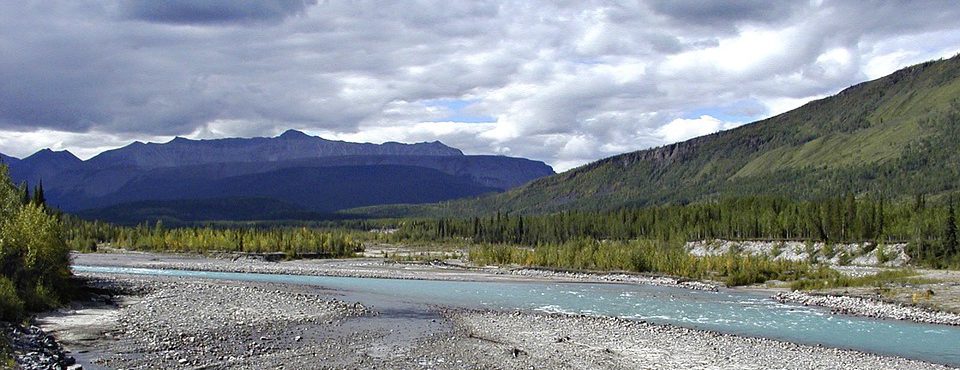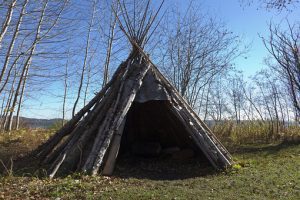Why the big fuss about Basic Wilderness Survival Skills?
Basic wilderness survival skills are just like car insurance. If nobody rear-ends you, or your windshield doesn’t get cracked by a baseball-sized rock, on your way to work, no problem, … right!
But if you come out of the bank or the grocery store and you are minus a tail-light and your rear side panel looks like you’ve just finished a demolition derby, you begin to really appreciate the value a carrying a good vehicular insurance policy.
In British Columbia, Canada, where I live, car insurance is a provincial matter, and the percentage of people that drive around without insurance is in the neighborhood of 1%. This varies from region to region, in different parts of the world, but you get the point. Almost no one in their right mind wants to drive around uninsured.
Now, this is just a vehicle and you are in a city or town, surrounded by thousands of people. Someone will show up to help you. A good Samaritan, the police, an ambulance, or a tow-truck driver, will soon show up to offer some form of assistance should you have a mishap with your vehicle.
What if you’re lost in the wilderness, it’s dark, and worst of all possible scenarios, … you are alone? You have been separated from your friends, or you left for the day, by yourself, and no one knows where you are. How important is an insurance policy now?
Are YOU more important, to your family and friends, than a few thousand pounds of metal, rubber, and glass?
That’s why you need to carry an insurance policy when you venture into the wild spaces.
That insurance policy is your wilderness survival kit and your skills in wilderness survival.
Now, can you see why it’s so important to carry a survival kit, properly supplied, and to know how to use it?
Your survival has to center around the basic requirements necessary to sustain life, and these are food, clothing, and shelter.
In the following series, parts 1 through 10, I am going to describe the most important skills you need to learn to survive your night in the wilderness.
What is the most important thing to address if you are lost?
In previous posts, I’ve said that my theater of operations is the Boreal Forest or Taiga. If you live in other parts of North America or the World for that matter, your food, clothing, and shelter requirements are more or less the same.
You need shelter to maintain a proper core-temperature of 98.6°F or 37°C.
This is not the exact temperature of all human beings. It is an average temperature and varies slightly throughout the day. Normal temperature range is 97.7 to 99.5°F.
Above 99.5 and up to 100.9°F means that you most likely have a fever, caused by an infection or illness, and this is called Hyperthermia.
A body temperature of less than 95.0°F or less than 35°C means you are hypothermic and this condition is called Hypothermia.
This is the big killer in my neck of the woods, and why I consider building a shelter to be so important.
In a previous post, I mentioned what you need to carry in your basic wilderness survival kit to address the building of your shelter.
What do you need to build a Shelter?
The First skill you need to learn, in the Boreal Forest, is how to construct a shelter. We can argue later about fire-building, once we are out of the rain, the snow, or the wind. The shelter that you build, will keep you protected from the elements, whether this is the rain, the wind, the snow, or the cold temperature.
Building beautiful natural shelters, that look very “outdoorsy” on social media, is a skill best left to seasoned survivalists. Believe me, that they require a lot of effort to build and are very hard to waterproof, especially in the Boreal Forest, where there are no giant banana leaves.
I always recommend carrying a “tarp” or piece of heavy construction plastic, 10 feet by 10 feet. Why 10 feet by 10 feet, you ask? This size of tarp can be easily handled by one person under most conditions and is relatively light-weight and easy to deploy. Unless you work in construction, stick to a tarp.
Easy-Peasy! … All big-box stores carry these tarps, and a 10-foot by 10-foot tarp can be purchased for 10 to 15 USD, all in.
Colour is an important consideration. Available colours are usually white, blue, green, and orange. Camouflage patterns are also available but expect the cost to double or even triple, for the same protection. Since you are probably lost, orange may be your best colour option.
Now that you have a 10′ x 10′ tarp in your day pack, let’s throw in some paracord and what I call carpenter’s string line, into your daypack.

What do I do, Now?
Tie a length of your Paracord between 2 trees that are 12 to 15 feet apart, as high as you can comfortably reach. This is usually in the 6 to 7-foot range. Don’t forget to scan the ground area that will be your floor, after you have covered it. In the forest, it’s usually easy to find a nice dry area free from rocks and debris and covered with fir or pine needles.
Throw the tarp over the paracord that you have tied to your 2 trees and you are halfway there. Next tie down the 4 corners to a sharp stick that you can find on the ground if you look around. Congratulations, you have just built yourself a basic shelter, that will protect you from the rain and the snow.
This is the very basic of shelters. Unless you can master this skill, there is no point in thinking that you can build complex shelters, under more adverse conditions.
If you have one of these to bundle yourself up in, under the shelter you have just built, you have significantly turned the odds in your favour.
This is if you are not too wet and cold, and the ambient temperature is not below the freezing mark.
Either way, you are now in greater control of your situation.
What do I need to Build my Shelter?
Let’s review what we’ve used so far. What have we taken out of our daypack?
1) 10 x 10 tarp, 2) Paracord, 3) carpenter’s string line or bank line, 4) emergency shelter
These 5 simple items, including your daypack, (#5), weigh less than 5 pounds and turn the odds in your favour, immediately. Easy to carry, easy to acquire, and easy on the pocketbook.
Read my lips. No More Excuses!
You can start by practicing this skill at home, in a local park, or on your next day hike. Once you’ve done this 3 or 4 times, it will only take 10 or 15 minutes to complete, without trying to win the race or kill yourself doing it.

How can you upgrade this Shelter?
Here are a few things you can do to upgrade on this concept.
1) Lower one end of your “ridge rope” to give the roof a slope and make it easier to shed water.
2) If it is raining, and you don’t have easy access to a creek or other water source, get your water bottle or metal pot out of your day-pack and place it strategically in a position to collect this precious rainwater.
3) When you slope your roof, position the low end into the wind, closing that door, to the wind blowing into your new home.
4) Another method of spreading your tarp over the “ridge” of your shelter is on the diagonal. This will create a different architecture that can be used to build a fire at the front of your shelter. More on this in Part 2.
What have we learned here?
We have learned that building a shelter, to keep you warm and dry, isn’t that difficult, when you know how.
We are also learning that the materials you need, are not expensive, and are not heavy to carry in a small daypack, that will weigh less than 10 pounds when we complete this 10-part Basic Wilderness Survival Skills course.
If these Basic Wilderness Survival Skills save your life, or the lives of you and your friend(s), will you consider it to be a good insurance policy?
Remember that this is about your survival in the wilderness.
As you gain more experience, your confidence will grow as well. This confidence will translate into all your day to day activities, and facilitate the acquiring of the other essentials of wilderness survival.
I can be reached by clicking on the Contact Me link, with comments, questions, and suggestions.
I also appreciate your comments about my post and when you share my post with your friends and the World.
All purchases you make from my links provide support and encouragement to continue sharing this information with you.
I am forever grateful for the few dollars I earn, but more important is the acknowledgement that my efforts are well received and of value to you and your friends.
Keep an eye out for Part 2, … How to build a Fire to Warm-up your new Shelter.


I agree with you, driving without car insurance is a very bad idea.
I love your tips on how to survive in the wilderness. How long would it take to build the shelter? Does one have to be very strong to do so? It’s always good to know how to survive in any situation!
Good Day, Holly.
Survival is a lot about adapting to the situation you are presented with.
This applies to the civilized world as well as to the wilderness. With a little bit of practice, this shelter can be built in 10 to 30 minutes, even with no experience.
I would caution against venturing that deep in the wilderness without experience.
Physical strength is not always important, but it is also an asset to possess.
Paul
Wow! I thoroughly enjoyed reading this. It was packed full of educational information on how to survive in the wilderness. I really liked how you mentioned in the beginning about it being your insurance. It is so true. Plus you never know when you’ll be in that kind of a situation. It’s always best to be safe than sorry. It was well put and well written. Thank you for the information and knowledge!
Thank you, Randi.
Your kind words are well received.
I am happy to hear that you have found some value in this post. Drop by again soon.
This is a 10-part series, where I will be describing the basic 10 essentials in greater detail.
I love bees as well. Do you have a web site on bees? It would be a real winner.
So many of my friends are beginning to understand their true worth in the ecosystem.
Paul
After going through your post I have the following questions to ask.
1. Do you have any survival kit you could recommend for me?
2. In a situation I encounter a predator what’s the first thing I should do?
3. What if its not raining how do I quench my taste when am tasty?
Good Day, Nsikakabasi.
All very good questions, indeed.
Let’s begin with number 1. There is a link in the post that leads you to my survival kit. Have a look at it.
#2 That depends a lot on the predator.
In my neck of the woods, I have bears, wolves, and mountain lions to deal with. You have similar animals, many of which are even more powerful.
The first thing is to stop and address your predator’s attitude and do this calmly and quickly. Sometimes you can hold your ground and sometimes, its best to retreat slowly. At the end of the day, only superior firepower can extricate you from this situation safely and still alive.
The problem with this is that many people do not carry this level of firepower when they encounter this level of predation and it is not always legal to carry weapons in these areas and many of these animals are given more value than they give our sorry a$$es. lol.
I can only finish by saying to try and avoid them, but this is not always possible. Tough question to answer and I thank you very much for bringing it to me.
#3 Simple. I live where there is often too much water. You perhaps live where there is too little water, therefore you must carry your water in or find water where you are. It is near impossible to find water where there is none.
Thanks for all the hard questions.
One final point to consider. I would try to find local hunters and elders that deal with these situations in your environment.
Drop by again to comment on part 2.
Paul